Cultural appropriation in the fashion industry, specifically when it comes to hijab fashion, has become a pressing concern. Muslim women’s attire, such as the hijab, holds deep cultural and religious significance. However, the appropriation of hijab styles by non-Muslim designers and models raises ethical and cultural sensitivity issues. It is essential to explore the impact of cultural appropriation on hijab fashion, understand its consequences, and emphasize the need for respectful representation of Muslim culture in the fashion industry.
Key Takeaways:
- Cultural appropriation in hijab fashion raises ethical and cultural sensitivity concerns.
- The appropriation of hijab styles alienates Muslim women and diminishes the significance of the hijab as a symbol of identity and religious devotion.
- Lack of representation and appreciation for hijab fashion reinforces marginalization and hinders diversity and inclusion in the industry.
- Cultural sensitivity and collaboration with Muslim designers can ensure respectful representation and maintain the cultural integrity of hijab fashion.
- Distinguishing between cultural appreciation and appropriation is crucial in hijab styling. Educating designers on the significance of the hijab helps prevent appropriation.
Hijabs as trendy accessories: A risk of alienation
In recent fashion shows, there has been a growing trend of non-Muslim designers using hijabs as trendy accessories. These designs may be visually appealing, but they risk alienating Muslim women by treating the hijab as a mere fashion trend, disregarding its significance as a symbol of identity and religious devotion.
The hijab holds great cultural and religious importance for Muslim women, representing their faith and personal choice to adhere to modesty. By reducing the hijab to a fashion accessory, non-Muslim designers may inadvertently marginalize and erase the experiences, beliefs, and identities of Muslim women.
It is essential to understand that the hijab is not just a piece of fabric worn for fashion purposes; it carries deep cultural and religious meaning for Muslim women. The decision to wear a hijab is often a personal and conscious choice made to align with religious values and express one’s identity.
“The hijab represents my identity as a Muslim woman. It’s not just a fashion statement for me. It’s a way to practice my religion and express my faith.” – Aisha Malik, Fashion Blogger
By using hijabs as trendy accessories without acknowledging their cultural and religious significance, designers risk perpetuating cultural appropriation in fashion. This can lead to the erasure of Muslim women’s voices and experiences in the industry, as their symbols of identity become appropriated by others for fashion trends.
To ensure respectful representation and foster inclusivity, non-Muslim designers should take the time to learn about the significance of the hijab and work collaboratively with Muslim designers who possess an understanding of its cultural and religious roots. By doing so, the fashion industry can create designs that celebrate diversity, respect cultural boundaries, and empower Muslim women in reclaiming their narrative in hijab fashion.
Recognizing the Significance of the Hijab
It is crucial for the fashion industry to acknowledge and respect the significance of the hijab in Muslim women’s lives. By valuing the identity and religious devotion associated with the hijab, the industry can move away from cultural appropriation and towards cultural appreciation.
In the next section, we will explore the lack of representation and appreciation for hijab fashion in mainstream media and the fashion industry, and the consequences of erasing Muslim women’s voices and experiences through appropriation.
Lack of representation and appreciation
The lack of representation and appreciation for hijab fashion in mainstream media and the fashion industry is a concerning issue that perpetuates the marginalization of Muslim women. In an industry that prides itself on creativity and inclusivity, the absence of diverse perspectives and cultural appreciation in hijab styling is deeply troubling.
Hijab fashion has evolved into a vibrant and dynamic expression of identity for Muslim women around the world. It reflects their values, beliefs, and cultural backgrounds. However, the mainstream media often fails to recognize and give credit to the cultural origins of hijab styles, treating them merely as trends that can be appropriated rather than embracing their deeper significance.
The fashion industry has the power and responsibility to promote diversity and inclusion, but the lack of representation and appreciation for hijab fashion sends a message that Muslim women’s contributions are only valid when filtered through a non-Muslim lens. This not only erases the unique experiences and creativity of Muslim designers but also reinforces the notion that their cultural symbols are only marketable when stripped of their authenticity.
The underrepresentation of hijab fashion in mainstream media and the fashion industry further marginalizes Muslim women, limiting their visibility and opportunities for growth. It perpetuates stereotypes and hinders the progress towards a more inclusive and equitable society.
It is time for the fashion industry to prioritize diversity and inclusion by embracing and celebrating hijab fashion in all its cultural richness. By acknowledging and appreciating the origins and unique beauty of hijab styles, the industry can empower Muslim women, uplift their voices, and create a more inclusive narrative of identity and fashion. This requires a genuine commitment to cultural appreciation, collaboration with Muslim designers, and the amplification of diverse perspectives in the mainstream media.
Representation of Hijab Fashion in Mainstream Media
| Publication/Platform | Frequency of Hijab Fashion Coverage |
|---|---|
| Vogue | Minimal coverage, occasional features |
| Elle | Infrequent coverage, sporadic representation |
| Harper’s Bazaar | Occasional coverage, limited inclusion |
| Refinery29 | Some representation, growing interest |
| Instagram Influencers | Increasing representation, powerful platform |
The table above demonstrates the current state of hijab fashion representation in mainstream media. While some platforms have made strides in featuring hijab fashion, there is still a long way to go in achieving full diversity and inclusion.
Cultural sensitivity in hijab design
When it comes to designing hijabs, cultural sensitivity should be a top priority. Respecting the cultural integrity of this garment is essential in avoiding cultural appropriation within the fashion industry. Collaborating with Muslim designers who have a deep understanding of the hijab’s symbolism and cultural significance can help create authentic and culturally sensitive hijab fashion.
By working together, non-Muslim designers and Muslim designers can bridge the gap between different cultures and create designs that respect and honor the hijab’s cultural roots. This collaboration ensures that the hijab is not reduced to a mere accessory or trend, but instead remains representative of its significance to Muslim women worldwide.
“Cultural sensitivity allows us to celebrate and appreciate the rich diversity of hijab styles without appropriating or erasing their cultural origins.” – Aisha Khan, Muslim fashion designer
By recognizing and valuing the expertise and cultural knowledge of Muslim designers, the fashion industry can uphold ethical considerations in hijab fashion. It is through this collaboration that designers can create meaningful and culturally appropriate hijab designs that resonate with both Muslim and non-Muslim audiences.
To further illustrate the importance of cultural sensitivity in hijab design, let’s take a look at the following table:
| Design Approach | Effect on Cultural Integrity |
|---|---|
| Collaboration with Muslim designers | Promotes cultural authenticity and respect |
| Appropriation by non-Muslim designers | Erases cultural origins and undermines cultural significance |
| Understanding and honoring the hijab’s symbolism | Preserves the integrity and meaning behind the garment |
Cultural sensitivity and collaboration with Muslim designers ensure that the hijab remains a symbol of cultural pride and religious devotion. This approach promotes diversity, inclusivity, and respect in the hijab fashion industry.
By embracing cultural sensitivity in hijab design, the fashion industry plays a vital role in maintaining the integrity and authenticity of this important garment. The collaboration between non-Muslim designers and Muslim designers fosters understanding, appreciation, and respect for diverse cultures while promoting meaningful representation of the hijab in fashion.
Appreciation vs. appropriation: Drawing the line
When it comes to hijab styling, it is vital to understand the distinction between cultural appreciation and cultural appropriation. Cultural appreciation involves genuinely valuing and respecting the cultural significance of the hijab, while cultural appropriation occurs when elements of the hijab are taken without understanding or acknowledging their cultural meaning and significance.
Appreciation entails recognizing the beauty and importance of the hijab as a symbol of identity and religious devotion. It involves learning about its historical and cultural significance, and valuing it as a form of self-expression for Muslim women. By appreciating the hijab, we acknowledge and honor the experiences, beliefs, and heritage of those who wear it.
In contrast, appropriation occurs when the hijab is taken out of its cultural context and utilized in a manner that overlooks its meaning and reduces it to a trend or fashion accessory. This can be done without a deep understanding or respect for the religious and cultural factors that surround the hijab.
Designers and stylists must educate themselves about the significance of the hijab before incorporating it into their creations. By approaching hijab styling with cultural sensitivity, they can navigate the fine line between appreciation and appropriation. This includes collaborating with Muslim designers, engaging in meaningful dialogue, and ensuring that their designs are a respectful representation of the hijab’s cultural and religious importance.
Hijab styling can be a platform for celebrating diversity, fostering understanding, and promoting inclusivity. By drawing the line between appreciation and appropriation, we can create a fashion industry that respects and embraces the cultural significance of the hijab.
Examples:
“We can appreciate the beauty of hijab styling without appropriating it. It is about understanding and respecting the cultural significance of the hijab, and uplifting the voices and experiences of Muslim women.”
Distinguishing between Appreciation and Appropriation
To better understand the difference between cultural appreciation and cultural appropriation in hijab styling, let’s take a look at some key points:
| Cultural Appreciation | Cultural Appropriation |
|---|---|
| Respecting and valuing the significance of the hijab | Treating the hijab as a fashion trend without acknowledging its cultural meaning and significance |
| Learning about the cultural origins and symbolism of the hijab | Using the hijab purely for its visual appeal without understanding its cultural context |
| Collaborating with Muslim designers and engaging in meaningful dialogue | Using the hijab without consulting or involving Muslim designers and communities |
| Approaching hijab styling with cultural sensitivity | Appropriating hijab styles without acknowledging the cultural and religious significance |
By making a conscious effort to appreciate and respect the significance of the hijab, designers can avoid appropriating its styles and contribute to a more inclusive and culturally sensitive fashion industry.
Consequences of appropriating hijab styles
The appropriation of hijab styles can have significant consequences for Muslim women and their sense of identity. When non-Muslim designers and models take credit for hijab styles rooted in Islamic culture, it results in the erasure of Muslim identity in hijab fashion. This erasure reinforces stereotypes and undermines the agency of Muslim women in shaping their own representation in the fashion industry.
The negative impact of cultural appropriation on Muslim women cannot be ignored. Appropriating hijab styles can lead to a loss of cultural and religious significance, reducing the hijab to a mere fashion trend rather than a profound symbol of identity and devotion. This reduction not only disrespects the experiences of Muslim women but also perpetuates the alienation they may already face in society.
By appropriating hijab styles without acknowledging their cultural origins, the fashion industry fails to promote diversity and inclusion. It reinforces the notion that Muslim women’s contributions to fashion are only valid when filtered through a non-Muslim lens. This erasure of Muslim identity not only overlooks the rich history and cultural significance of the hijab but also limits the representation and creativity of Muslim designers and voices in the industry.
It is important to recognize that cultural appropriation goes beyond mere appreciation or inspiration, as it involves taking elements of the hijab without understanding or acknowledging their cultural and religious meaning. This lack of cultural sensitivity reinforces power dynamics and perpetuates a system in which non-Muslim designers and models profit from a cultural symbol that profoundly impacts the lives and experiences of Muslim women.
In order to avoid the consequences of appropriating hijab styles, it is essential for the fashion industry to prioritize respect, education, and collaboration. By working with Muslim designers and ensuring their voices are heard and valued, the industry can create an inclusive space where diverse perspectives and experiences are celebrated. This collaboration can lead to the development of hijab fashion that maintains cultural integrity and respects the significance of the hijab, empowering Muslim women and promoting a more ethical and inclusive fashion industry.
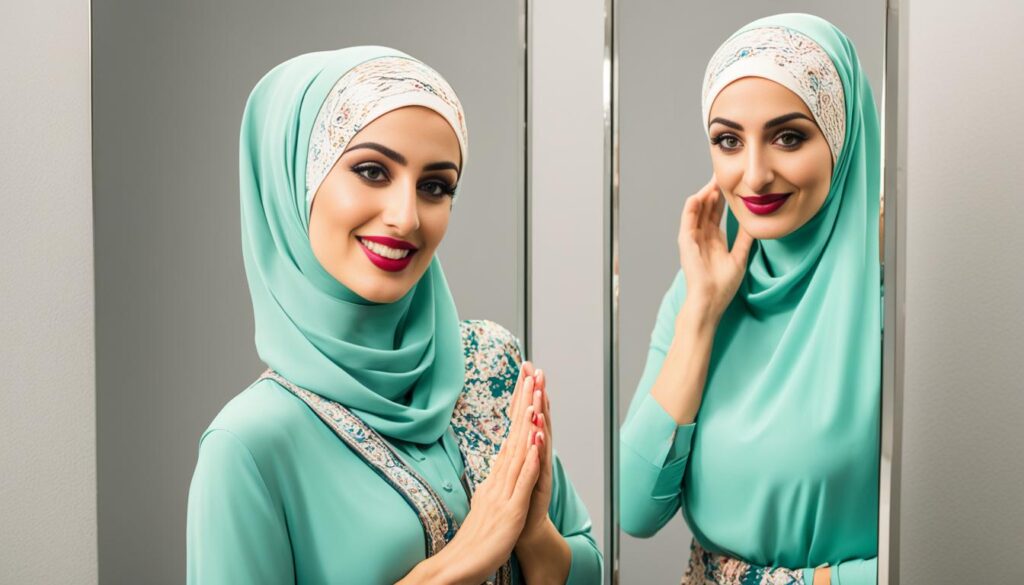
Quotes:
“The appropriation of hijab styles erases our identity and marginalizes our contribution to the fashion industry.” – Ayesha Khan, Muslim fashion designer
“Cultural sensitivity and respect are crucial in hijab fashion to avoid perpetuating stereotypes and perpetrating cultural appropriation.” – Sarah Ahmed, Muslim influencer and advocate
Negative Consequences of Appropriating Hijab Styles
| Consequences | Description |
|---|---|
| Erasure of Muslim Identity | Appropriation undermines the cultural and religious significance of the hijab, erasing the identity of Muslim women in hijab fashion. |
| Perpetuation of Stereotypes | Appropriation reinforces stereotypes about Muslim women and limits their representation and creativity in the fashion industry. |
| Marginalization of Muslim Voices | Appropriation diminishes the agency of Muslim designers and voices, perpetuating a system where non-Muslim designers profit from Islamic symbols. |
| Lack of Cultural Sensitivity | Appropriation ignores the rich cultural history and significance of the hijab, reducing it to a mere fashion trend. |
The importance of respectful representation
In the fashion industry, respectful representation of Muslim culture is crucial for promoting diversity, empowerment, and understanding. This includes accurately portraying hijab fashion and actively involving Muslim voices in the design and production process.
When it comes to hijab fashion, it is essential to go beyond surface-level aesthetics and understand the cultural and religious significance behind the garment. By showcasing hijab fashion in its true form, the fashion industry can contribute to a more inclusive society.
“Respectful representation involves acknowledging and respecting the cultural origins of hijab fashion and ensuring that Muslim voices are at the forefront of its design and production.”
Accurate portrayal of hijab fashion
An accurate portrayal of hijab fashion requires an understanding of its cultural context and significance. By recognizing the diverse styles and individual expressions within hijab fashion, the fashion industry can authentically capture the richness and beauty of this form of self-expression.
Designers and brands should collaborate with Muslim designers who have a deep understanding of hijab fashion. By empowering Muslim designers and giving them a platform to showcase their talent, the fashion industry can ensure that hijab fashion is accurately represented.
Inclusion of Muslim voices in the fashion industry
Including Muslim voices in the fashion industry is essential for designing hijab fashion with cultural sensitivity and authenticity. Muslim designers bring a unique perspective and firsthand experience of the hijab, ensuring that it is represented respectfully.
By offering opportunities for Muslim designers to shape and influence the narrative around hijab fashion, the fashion industry can move towards a more inclusive and representative landscape. Muslim voices should be heard and valued throughout the entire design and production process.
Empowering Muslim designers
Empowering Muslim designers in the fashion industry is key to promoting diversity, creativity, and innovation within hijab fashion. By providing equal opportunities for Muslim designers to showcase their talent and skills, the industry can break down barriers and challenge stereotypes.
Brands and organizations can support Muslim designers by providing mentorship, resources, and platforms for their work to be recognized. This empowerment can result in hijab fashion that reflects the diverse perspectives and aspirations of Muslim women.
By respecting and honoring the cultural significance of hijab fashion, accurately portraying its beauty, and including Muslim voices in the design process, the fashion industry can ensure a respectful representation of Muslim culture. This will not only empower Muslim designers but also promote diversity, understanding, and acceptance within the industry and society at large.
Ethical considerations in hijab fashion
When it comes to hijab fashion, ethical considerations play a crucial role in ensuring the industry operates responsibly and aligns with the values and needs of its Muslim consumers. From production practices to design ethics, here are some key aspects to consider:
Adopting Sustainable Production Practices
One important ethical consideration in hijab fashion is the adoption of sustainable production practices. This involves minimizing the environmental impact, promoting fair labor practices, and ensuring transparency in the supply chain. By opting for sustainable materials and manufacturing processes, the industry can contribute to a more eco-friendly and socially responsible approach.
Adherence to Halal Values
Halal values are an integral part of Muslim culture, and it is essential for hijab fashion to adhere to these values. This includes ensuring that all aspects of the production process, from sourcing materials to manufacturing and distribution, comply with halal standards. By doing so, the industry shows respect for the religious beliefs and practices of its consumers.
Prioritizing Quality and Ethics in Hijab Design
Quality and ethics should be at the forefront of hijab design. This means creating designs that are both fashionable and functional, ensuring that they meet the needs and preferences of Muslim consumers. Ethical considerations also include avoiding cultural appropriation and respecting the cultural significance of the hijab. Collaborating with Muslim designers who understand the importance of cultural integrity in hijab design can help maintain ethical standards in the industry.
“Ethical considerations in hijab fashion involve adopting sustainable production practices, adhering to halal values, and prioritizing the quality and ethics of hijab design.”
| Ethical Considerations | Actions |
|---|---|
| Sustainable Production Practices | Utilizing eco-friendly materials and promoting fair labor practices |
| Adherence to Halal Values | Ensuring compliance with halal standards throughout the supply chain |
| Quality and Ethics in Hijab Design | Creating designs that respect cultural significance and collaborating with Muslim designers |
Maintaining ethical considerations in hijab fashion is not only a matter of responsibility but also a reflection of the industry’s commitment to the needs and values of its Muslim consumers. By prioritizing sustainability, halal values, and ethical design practices, the industry can cultivate a positive and inclusive fashion landscape.
Empowering Muslim women through hijab fashion
Hijab fashion serves as a powerful means of empowerment and self-expression for Muslim women. By embracing hijab styling, Muslim women can reclaim the narrative surrounding their identity and challenge prevailing stereotypes. Through hijab fashion, diversity is celebrated, and the industry is propelled towards a more inclusive future.
One of the ways hijab fashion empowers Muslim women is by allowing them to express their unique identities. Each individual has distinct tastes and preferences, and through hijab styling, Muslim women can showcase their personal style while still adhering to their religious beliefs.
“Hijab fashion is a form of self-expression that allows Muslim women to confidently assert their cultural and religious identity.” – Aisha Rahman, hijab fashion influencer
Moreover, hijab fashion enables Muslim women to reclaim the narrative surrounding their identity. By actively participating in the design, production, and representation of hijab fashion, Muslim women shape the discourse and challenge preconceived notions imposed by mainstream society.
Celebrating Diversity in Hijab Styling
Hijab fashion celebrates diversity within the Muslim community and beyond. It represents a defiance against the homogenization of beauty standards and promotes the acceptance and celebration of different cultural backgrounds, styles, and interpretations.
By embracing diversity in hijab styling, the fashion industry can showcase the unique stories and experiences of Muslim women. Collaboration with designers from diverse backgrounds can help create innovative and inclusive designs that resonate with a wide range of Muslim women.
| Benefits of Celebrating Diversity in Hijab Styling | Impact on the Hijab Industry |
|---|---|
| Promotes inclusivity and representation | Increased market demand for diverse designs |
| Challenges stereotypes and promotes understanding | Greater engagement and support from diverse consumer base |
| Fosters cultural dialogue and appreciation | Increased brand loyalty and recognition |
By celebrating diversity in hijab styling, the fashion industry paves the way for a more inclusive and representative landscape that empowers Muslim women and promotes cultural understanding.
The rise of modest fashion
Modest fashion has experienced a remarkable surge in popularity worldwide. This upward trajectory is evident in the growing global interest in modest clothing, including hijabs and other modest apparel. As more individuals embrace the concept of modesty in fashion, there has been a significant economic impact on the industry, prompting the emergence of numerous modest fashion brands and platforms.
Modest fashion appeals to individuals seeking clothing options that align with their personal values while allowing for self-expression. The rise in demand for modest clothing reflects a shift towards a more inclusive and diverse fashion landscape. It recognizes the importance of catering to individuals who prefer styles that provide greater coverage and uphold traditions, such as Muslim women who choose to wear hijabs.
This global interest in modest fashion has opened up new opportunities for designers, retailers, and entrepreneurs to tap into this growing market. The emergence of modest fashion brands and platforms has not only provided individuals with a wider range of clothing options but has also created jobs and stimulated economic growth within the fashion industry.
Benefits of the Rise of Modest Fashion
- The rise of modest fashion has fostered a more inclusive and diverse fashion industry, encouraging representation from various cultural backgrounds.
- Increased demand for modest clothing has led to the development of innovative and stylish designs that cater to a broader audience.
- Modest fashion brands and platforms have created employment opportunities within the sector, contributing to economic growth.
- Greater awareness and acceptance of modest fashion have prompted mainstream retailers to include modest clothing options, promoting diversity and inclusivity.
The growth of modest fashion not only reflects a change in consumer preferences but also signifies a shift towards more culturally sensitive and respectful representation within the fashion industry. It is essential for brands and designers to recognize and acknowledge the cultural significance of modest fashion to ensure it is represented accurately and respectfully, avoiding cultural appropriation. This includes collaborating with Muslim designers and incorporating diverse perspectives to create authentic and culturally sensitive designs.
“The rise of modest fashion reflects a greater acceptance and celebration of diverse cultural expressions in the fashion industry. It is an exciting time for those seeking fashionable and modest clothing options that allow them to express their personal style and values.” – Samira Hassan, Fashion Designer
The image below showcases a diverse group of women confidently wearing modest fashion, representing the global interest and appeal of this growing trend.
| Key Trends in Modest Fashion | Impact on the Fashion Industry |
|---|---|
| Inclusive designs that cater to various body types and styles | Increased sales and revenue for modest fashion brands |
| Rise of modest fashion influencers and bloggers | Collaborations and partnerships between modest fashion brands and mainstream retailers |
| Growing diversity in modest fashion runways and campaigns | Job creation and economic growth within the modest fashion sector |
Promoting cultural dialogue and understanding
Hijab fashion has the power to transcend cultural boundaries and foster understanding among diverse communities. By embracing and respecting different cultures, the fashion industry can bridge gaps and promote acceptance on a global scale. Through collaborations, representation, and respectful design, hijab fashion can contribute to a more inclusive and understanding society.
The beauty of hijab fashion lies in its ability to spark conversations and promote cultural dialogue. When individuals from different cultures engage with hijab fashion, they have the opportunity to learn about the rich traditions, values, and beliefs associated with the hijab. This exchange of ideas and perspectives cultivates a deeper understanding and appreciation for diverse cultures, breaking down stereotypes and fostering mutual respect.
As designers and brands incorporate hijab fashion into their collections, they play a vital role in promoting cultural dialogue. By featuring diverse models and showcasing the unique styles and designs inspired by different cultural backgrounds, the fashion industry sends a powerful message of unity and celebration of diversity. This visual representation allows for meaningful conversations surrounding cultural identities and helps to strengthen the fabric of our global community.
Promoting Acceptance and Respect
By embracing hijab fashion as a means of promoting cultural dialogue, we can create a society where acceptance and respect for diverse cultures are the norm.
Through hijab fashion, we can challenge preconceived notions and misconceptions about the hijab. By showcasing the diverse range of styles, designs, and interpretations of hijab fashion, we promote the understanding that there is no one-size-fits-all approach to wearing the hijab. This celebration of individuality and personal expression within the hijab serves as a reminder that cultural diversity is something to be cherished and respected.
Moreover, by featuring hijab fashion on international runways, in mainstream media, and in everyday life, we normalize the presence of hijab-wearing individuals. This normalization helps to break down barriers and create a more inclusive society, where individuals can express their cultural and religious identities without fear of discrimination or judgment.
By promoting acceptance and respect for diverse cultures through hijab fashion, we establish a foundation of mutual understanding and empathy. This foundation allows for deeper connections and promotes a society where cultural diversity is celebrated rather than feared.
Hijab fashion serves as a visual representation of cultural diversity and identity. By showcasing the beauty and uniqueness of hijab fashion, we challenge stereotypes and break down cultural barriers. Together, we can foster a world where acceptance, respect, and understanding for diverse cultures thrive.
Conclusion
Cultural appropriation in hijab fashion has a profound impact on the identity of Muslim women and the integrity of their cultural symbols. The fashion industry must prioritize cultural sensitivity and respect when designing and representing hijabs. By acknowledging the significance of the hijab and collaborating with Muslim designers, the industry can cultivate diversity, empowerment, and understanding in hijab fashion.
The appropriation of hijab styles by non-Muslim designers and models raises important ethical and cultural sensitivity issues. It risks alienating Muslim women by commodifying the hijab as a trendy accessory rather than recognizing its deep-rooted religious and cultural meaning. This disregards the experiences and beliefs of Muslim women and perpetuates marginalization within the fashion industry.
Respectful representation is crucial for the fashion industry to avoid erasing Muslim identity in hijab fashion. Accurate portrayal of hijab fashion, inclusion of Muslim voices in the design process, and empowering Muslim designers are essential to challenge stereotypes and shape a more inclusive narrative. The fashion industry can bridge cultural gaps and foster acceptance by embracing diverse cultures and promoting understanding through hijab fashion.
FAQ
What is the impact of cultural appropriation on hijab fashion?
Cultural appropriation in hijab fashion can diminish the cultural and religious significance of the hijab, alienate Muslim women, and perpetuate stereotypes.
How does the use of hijabs as trendy accessories risk alienating Muslim women?
By treating hijabs as mere fashion trends, non-Muslim designers disregard the identity and religious devotion associated with the hijab, which can alienate Muslim women.
Why is there a lack of representation and appreciation for hijab fashion in mainstream media and the fashion industry?
The lack of representation and appreciation for hijab fashion perpetuates the marginalization of Muslim women and reinforces the idea that Muslim women’s contributions to fashion are only valid through a non-Muslim lens.
How can cultural sensitivity be prioritized in hijab design?
Cultural sensitivity in hijab design can be achieved through collaboration with Muslim designers, who have a deep understanding of the hijab’s symbolism and cultural significance.
What is the difference between cultural appreciation and cultural appropriation in hijab styling?
Cultural appreciation involves respecting and valuing the cultural significance of the hijab, while cultural appropriation involves taking elements of the hijab without understanding or acknowledging their cultural meaning.
What are the consequences of appropriating hijab styles?
Appropriating hijab styles erases the Muslim identity in hijab fashion, reinforces stereotypes, and undermines the agency of Muslim women in shaping their own representation in the fashion industry.
Why is respectful representation of Muslim culture in the fashion industry important?
Respectful representation involves accurately portraying hijab fashion and including Muslim voices in the design and production process, empowering Muslim designers to reclaim and shape the narrative around hijab fashion.
What ethical considerations should be taken into account in hijab fashion?
Ethical considerations in hijab fashion include adopting sustainable production practices, adhering to halal values, and prioritizing the quality and ethics of hijab design.
How can hijab fashion empower Muslim women?
Hijab fashion can empower Muslim women by allowing them to express their identities, challenge stereotypes, and shape their own representation in the hijab industry.
What is the significance of the rise of modest fashion?
The rise of modest fashion, including hijab fashion, has had a significant economic impact, leading to the emergence of modest fashion brands and platforms.
How can hijab fashion promote cultural dialogue and understanding?
By embracing and respecting diverse cultures, hijab fashion can bridge gaps, promote acceptance, and foster a more inclusive and understanding society.
What is the conclusion regarding the impact of cultural appropriation in hijab fashion?
It is crucial for the fashion industry to prioritize cultural sensitivity and respect in hijab design and representation to promote diversity, empowerment, and understanding in hijab fashion.
Source Links
- https://www.dazeddigital.com/fashion/article/39354/1/the-fashion-industry-fetishising-the-hijab-aw18-runways-headscarves-trend-islam
- Is Makeup Haram in Islam for Women? Halal Insights
- Navigating Challenges Faced by Muslimahs Today


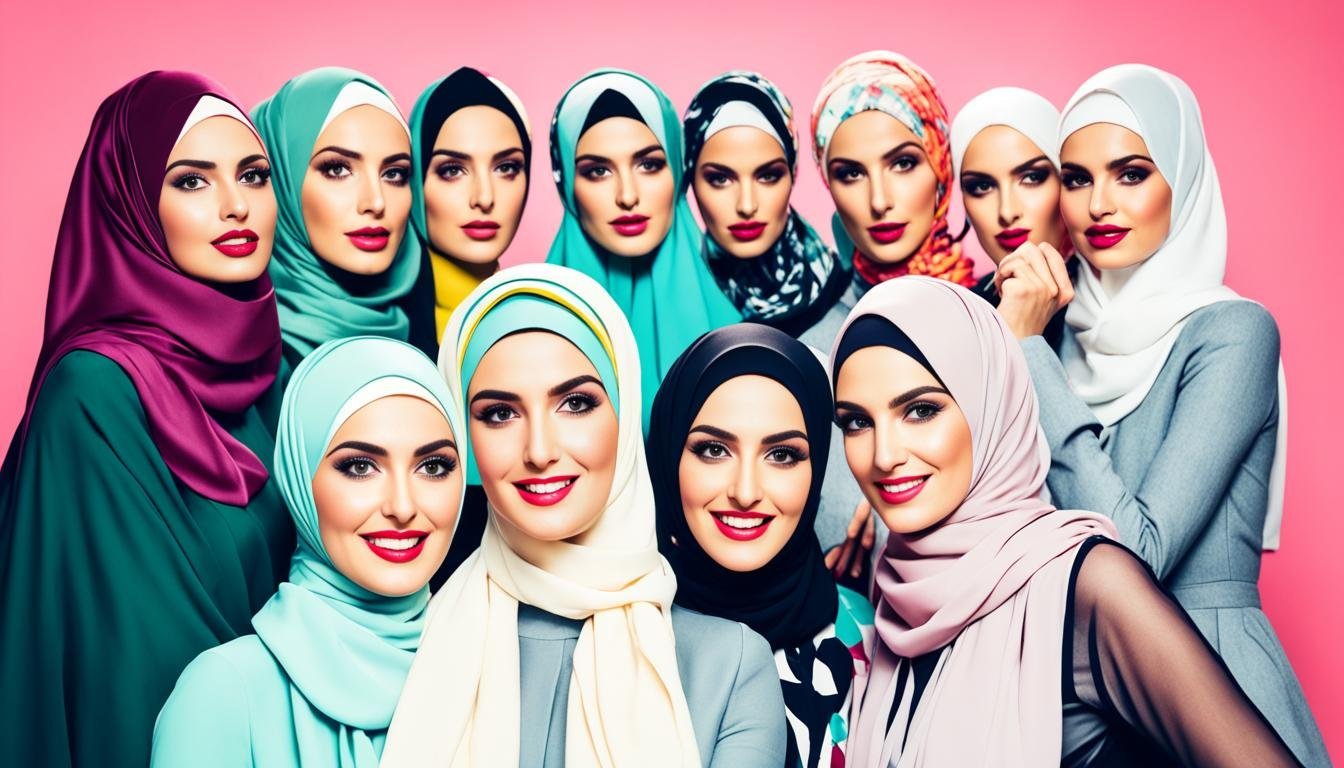

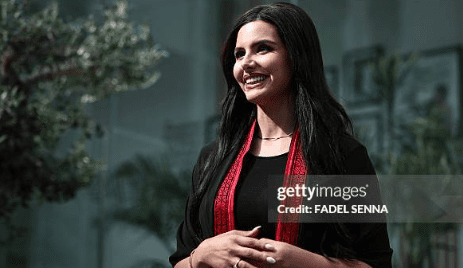
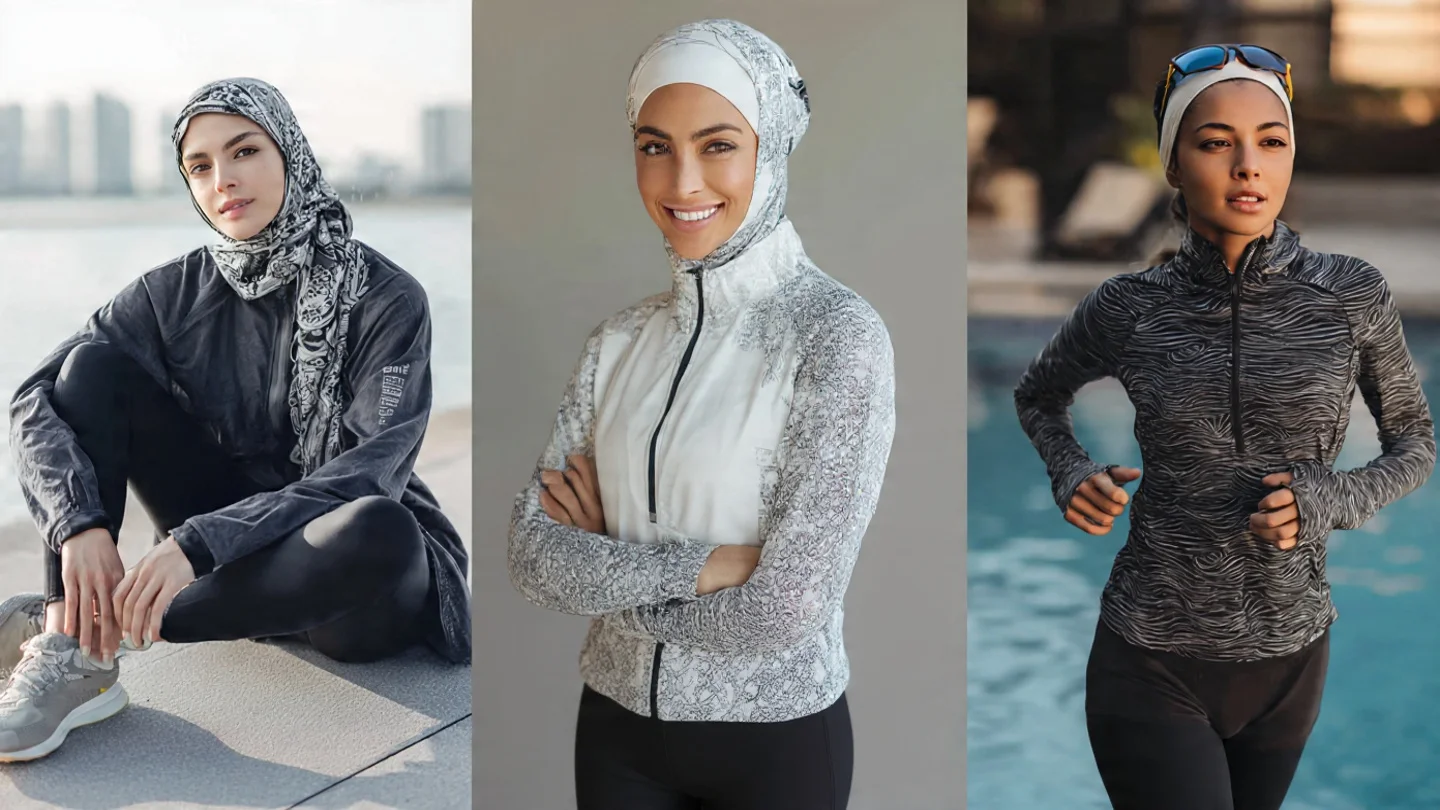

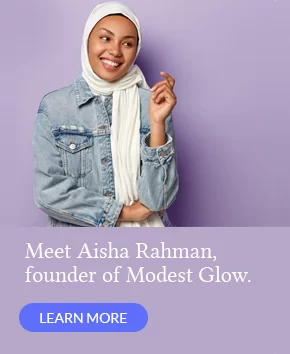








One Response
Ahaa, its pleasant discussion regarding this article here at this web site, I have read all that, so at this time me also commenting here.